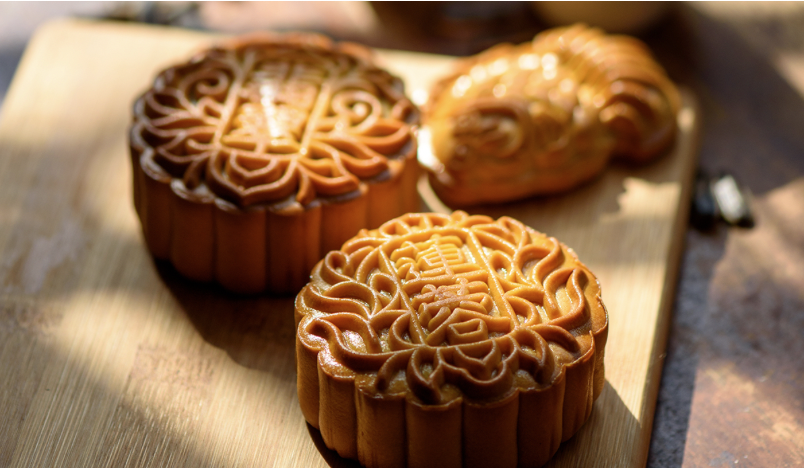How Do OHSers Celebrate the Mooncake Festival?
John Wang of https://alumni.umich.edu/michigan-alum/mooncake-rising/
Mooncakes are an iconic part of the Mooncake festival, similar to how Christmas trees are to Christmas.
Around the world, many different cultures celebrate harvest festivals. Festivals like Pongal, the Rice Harvest Festival, and Sukkot, are all examples of harvest festivals celebrated around the world. One such festival is the Mooncake Festival, celebrated in Chinese culture, as well as neighboring countries such as Japan, Korea, and Vietnam. It occurs on September 10th this year and is a tradition that honors a successful harvest season and has its origins in a story about the moon.
Jasmine Li, a senior at OHS, celebrates the Mooncake Festival. “During this year’s Mid-Autumn Festival,” she says, “my family and I came together for a family dinner and shared mooncakes as well as in-season fruits [including] pomegranates, pears, peaches, and apples! We ended the night by going outside for a walk to look at the large full moon.”
Mooncakes are eaten on the festival because of a Chinese mythological story, called The Lady Chang’e Flying to the Moon, which describes a man, Hou Yi, offering his wife’s, Chang’e, favorite foods to the moon in order to convey how much he missed her, as she lived on the Moon. More information can be found in an article from the State Council of the People’s Republic of China. These foods included mooncakes, which consist of a thick pastry skin, and an inner layer of a sweet filling. Because of this, Chang’e is believed to extend her blessings to those who are wed and around September 10th, the date of the festival.
Historically, celebrations of the festival included worship and offerings made to the moon goddess, Chang’e. This tradition has since become a rare sight among families that celebrate the festival. A more common tradition now is to light lanterns and let them fly into the sky, symbolizing good luck and prosperity.
“What is common to all of [the celebrations] is spending time with family — the best part! The mooncakes, either gifted, store-bought, or even homemade, are also delicious,” says Li. The mooncake symbolizes wholeness and unity, like the full moon that occurs near this festival.
An anonymous OHS student said, “We eat mooncakes! Also, I talk with my family about 嫦娥 and the story behind mooncakes and the mooncake festival!”
According to an article from the Pima County Library, one theory is that mooncakes are eaten because of a Han Chinese rebellion against the Mongols in the 13th century during which the Han Chinese used messages hidden in mooncakes to communicate with one another. The day that the rebellion succeeded was near September 10th, thus becoming the first Mooncake Festival.
Another OHS student who preferred to remain anonymous said that during the festival “Friends give [them] food (especially mooncakes).” Friends sharing food is a common part of the Mooncake Festival, as the full moon represents the fullness of family and friendship. They also “made mooncakes for the first time this year” with “ [their] own red bean paste to fill them.” Mooncakes can be filled with a variety of pastes, such as lotus seeds, nuts, and white beans.
The celebration of the Mooncake Festival can vary throughout families as they incorporate traditions and family history. Another OHS student focuses their celebration on their sister’s adoption. “My sister was adopted around this time, so we celebrate the amount of time she has been a part of this family,” they said.

